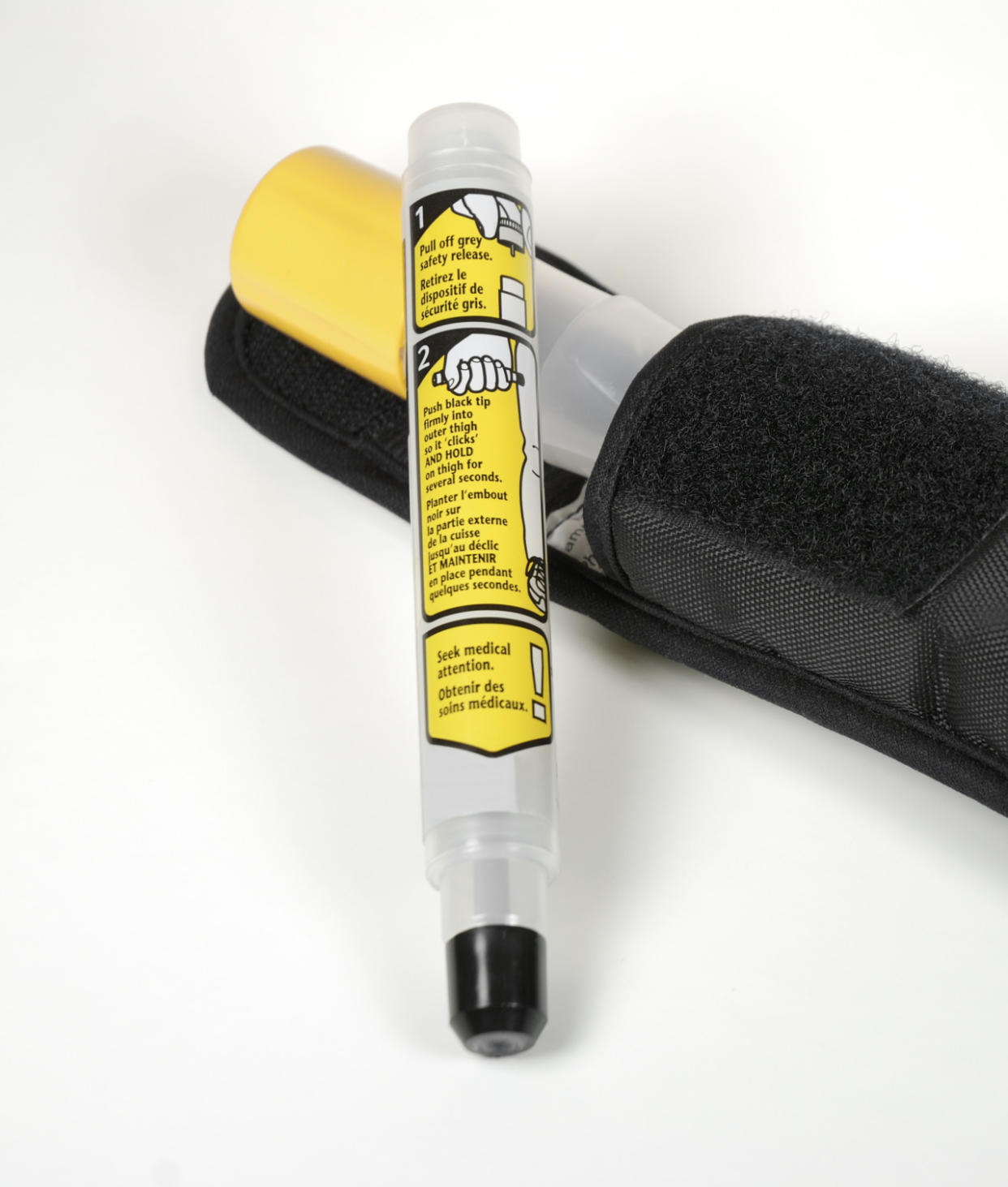The Dangerous Side of EpiPens

For the 5.9 million children with a food allergy in the U.S., epinephrine injections, such as EpiPens, are a potential lifesaver that prevent anaphylaxis — a life-threatening allergic reaction. However, the device isn’t without some risks.
According to a new study published in the Annals of Emergency Medicine, epinephrine auto-injectors can cause injury if not used properly, causing lacerations or broken needles stuck under the skin. “Some of the lacerations were quite deep, and led to significant scarring,” study author Julie Brown, MD, associate professor in the department of pediatrics at the University of Washington and emergency medicine attending physician at Seattle Children’s Hospital, tells Yahoo Parenting. “But these injuries must be considered in the context of the anaphylactic event that was occurring, which was life threatening. Many of these children were very ill at the time of use, and these devices were likely also lifesaving.”
STORY: A Drug to Cure Peanut Allergies Is in the Works
Although injuries are fairly uncommon given how frequently epinephrine injections are used, Brown finds the research results a bit worrying. “It is concerning that we were able to find so many reports of injuries — 25 in the report and the addendum — just by asking on a list-serve and a few Facebook allergy groups,” she says. “And we continue to hear about more. This is probably just the tip of the iceberg.”
STORY: Kids and Pollen: Best Way to Treat Allergies
Part of the problem is that parents aren’t always instructed to immobilize their child’s leg when administering the injection, which contributes to these injuries. Also, many of the injuries happened because of the length of time the auto-injectors were held in as the child was moving. “Instructions for use of the EpiPen indicate that the device should be held firmly against the thigh for 10 seconds,” says Brown. “However, we are unaware of any evidence to support the need for this long injection period. During this time, the needle remains fully extended in the thigh, giving an opportunity for needle-related injuries to occur, particularly in young children who may resist the injection. Some of the injuries in our series occurred towards the end of the 10-second hold, suggesting that the duration of the injection may be an important factor contributing to these injuries. Evidence suggests that the medication is delivered effectively in a much shorter period of time.”
Purvi Parikh, MD, adult and pediatric allergist and immunologist at NYU Langone Medical Center, agrees that auto-injectors are held in longer than necessary. “Most studies say within two seconds the medication is delivered — some in less than a second,” Parikh tells Yahoo Parenting. “If you feel the pressure and hear a click from the injector, it’s been delivered.”
Brown’s advice to families to avoid injury? “Families using devices without self-retracting needles (EpiPen and generic devices) should be aware of the risk of needle-related injuries throughout the 10-second hold period, and should securely restrain their children throughout that time,” she says. Also, know that you don’t have to hold in the needle for the full 10 seconds. If you’re using the Auvi-Q and Allerject devices, in which the needle retracts within two seconds of the 5-second count, children still need to be restrained for those first couple of seconds of the injection to avoid injury.
But Parikh cautions parents not to let the fear of a possible wound make them hesitate to use these injectors. “It’s better to take the chance of injury than to not use [an injector], because it’s a life-saving device,” she says, “and injuries are few and far between.”
Please follow @YahooParenting on Facebook, Twitter, Instagram, andPinterest. Have an interesting story to share about your family? Email us at YParenting (at) Yahoo.com.
(Photo: Ian Boddy/SPL/Getty Images)

